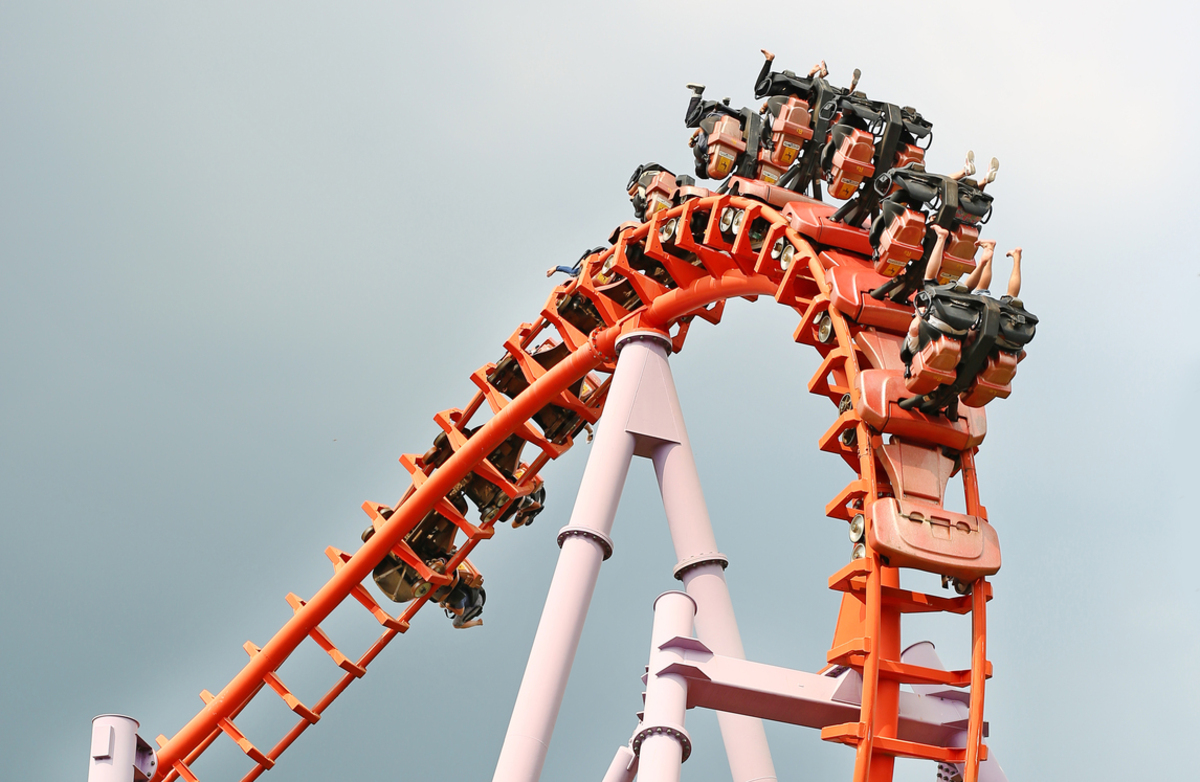Going though four or more hypomanic, manic, or depressive episodes a year means you're likely to be diagnosed with bipolar disorder with rapid cycling. The episodes can occur in any combination and order, but there have to be at least four.
Rapid cycling occurs in 10 to 20 percent of people with bipolar disorder, mostly women, and it develops later in the course of illness. It’s important to note that rapid cycling is not strictly bonded to a specific type of bipolar disorder. It can come with any type, but luckily it is just a transient nuisance for some patients — most of them will experience it at certain times, but also go through periods when the label won’t be applicable.

Rapid cycling is not a specific illness, but rather the course of bipolar disorder, with symptoms identical to those of any of the four main types of bipolar disorder:
- Bipolar I disorder
- Bipolar II disorder
- Cyclothymic Disorder
- Other Specified and Unspecified Bipolar and Related Disorders
Possible triggers for rapid cycling in bipolar disorder
Scientists still haven’t found out exactly why some people develop rapid cycling, but other than being a female with bipolar disorder and specific hormonal fluctuations, a few other factors can contribute to the development of rapid cycling.
Age of onset
Some researchers have found that the age at which you first develop symptoms of bipolar disorder plays a big role in determining the type of the disease and the intensity of the symptoms, so apparently, early age of onset means a person is more likely to become a rapid cycler with bipolar II disorder.
Stress
Going through certain stressors without treatment for bipolar disorder can be one of the possible causes of rapid cycling. This theory is known as sensitization or “kindling hypothesis”, and it lies on the premise that bipolar episodes occur when a certain life event, either actual or expected, causes stress.
Studies suggest that people become increasingly sensitized to outside stimuli. Individuals tend to experience minor negative events before the depressive phase and minor positive life events prior to hypomania. These stressors have not been severe enough to lead to the first onset of bipolar disorder, but now often trigger recurrent bipolar episodes.
Antidepressants
According to a few recent studies, the use of antidepressants meant more depressive episodes in those who kept on with antidepressant treatment as opposed to those who discontinued the treatment. Well-known antidepressant medications such as Prozac or Zoloft have shown ineffective in the treatment of rapid cycling, and they can even increase the frequency with which episodes hit. This is why many psychotherapists now prescribe antidepressants along with mood stabilizers such as lithium — which makes them much less likely to lead to rapid cycling.
Other health conditions
Rapid cycling has been linked to several other health conditions such as neurological disease multiple sclerosis, low thyroid function, delayed development, as well as certain head injuries.
What's it like to live with rapid cycling?
Bipolar disorder comes in multiple types. Someone may be depressed most of the time, with a few short-term hypomanic episodes. Someone else could be manic most of the time, which means overly excited, impulsive, and grandiose.
It can be hard to keep track of all the mood changes a person with rapid cycling goes through in just a year. If you know someone who has bipolar disorder with rapid cycling, maybe you remember leaving this person elated, and as you return they are suddenly depressed. If this leaves you frustrated, just imagine how it is for them. It’s not like they can control their feelings!
Most people with bipolar disorder are unable to maintain their old schedule when they first get diagnosed, until the new routine with medications and talk therapy is fully established. Most aspects of life will typically suffer, including personal relationships, career, and everything else in between. This is the time when they need support most of all; knowing that they can count on someone is priceless.
Rapid cycling can sometimes be a precursor to more devastating manifestations of bipolar disease such as psychosis. Also, it is now known that people with rapid cycling don’t respond that well to treatment, especially lithium, but probably other medications too, so it’s important to visit your therapist often to discuss your state and possible options.
- Photo courtesy of SteadyHealth
- books.google.ba/books?id=-JivBAAAQBAJ
- www.ncbi.nlm.nih.gov/pmc/articles/PMC4332547/
- www.ncbi.nlm.nih.gov/pubmed/25688428
- www.ncbi.nlm.nih.gov/pmc/articles/PMC4519402/
- adaa.org/understanding-anxiety/related-illnesses/bipolar-disorder-2
- www.bipolaruk.org/faqs/what-is-rapid-cycling
- www.hindawi.com/journals/jtr/2011/306367/


Your thoughts on this